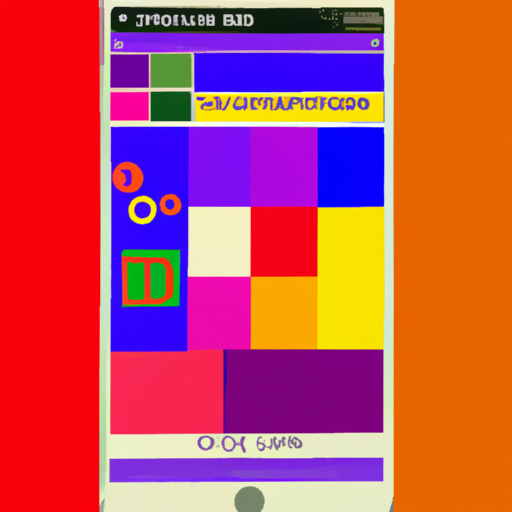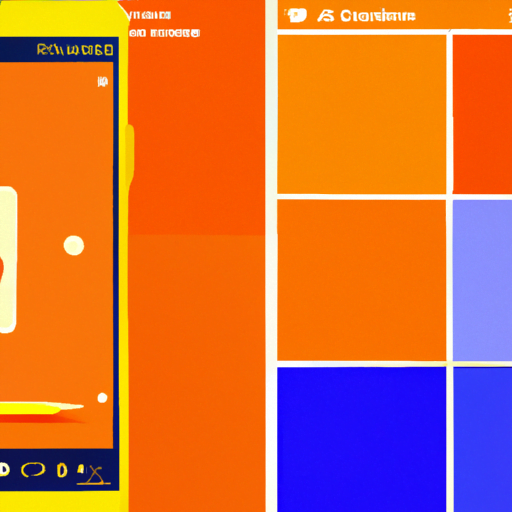
-
Table of Contents
Designing for App Interfaces: User-Centered Mobile Design

Mobile apps have become an integral part of our daily lives, providing us with convenience, entertainment, and access to information at our fingertips. However, not all apps are created equal. The success of an app depends on its design, and more specifically, its user-centered design. In this article, we will explore the importance of designing for app interfaces with a user-centered approach, and how it can lead to better user experiences and increased app engagement.
The Importance of User-Centered Design
User-centered design is an approach that focuses on the needs, preferences, and behaviors of the end-users. It involves understanding the target audience and designing an app interface that caters to their specific requirements. By putting the user at the center of the design process, developers can create apps that are intuitive, easy to use, and visually appealing.
One of the key benefits of user-centered design is improved usability. When users can easily navigate through an app and find what they are looking for, they are more likely to engage with the app and achieve their goals. This leads to higher user satisfaction and increased app usage.
Another advantage of user-centered design is increased user engagement. By understanding the motivations and behaviors of the target audience, designers can create app interfaces that are engaging and encourage users to interact with the app on a regular basis. This can be achieved through the use of gamification techniques, personalized content, and interactive elements.
Understanding the Target Audience
Before starting the design process, it is crucial to have a deep understanding of the target audience. This involves conducting user research to gather insights into their needs, preferences, and behaviors. By understanding the target audience, designers can create app interfaces that are tailored to their specific requirements.
There are several methods that can be used to gather user insights. Surveys, interviews, and focus groups can provide valuable information about user preferences and pain points. Analyzing user data and conducting competitor analysis can also help identify trends and best practices in app design.
For example, let’s consider a fitness app targeting millennials who are interested in staying fit and healthy. Through user research, the designers may discover that this audience prefers a clean and minimalist design, with easy access to workout routines and progress tracking. Armed with this knowledge, the designers can create an app interface that aligns with the preferences of the target audience.
Designing for Mobile
Designing for mobile presents unique challenges compared to designing for desktop or web interfaces. Mobile screens are smaller, and users interact with apps using touch gestures. Therefore, it is important to optimize the app interface for mobile devices to ensure a seamless user experience.
One of the key principles of mobile design is simplicity. Mobile screens have limited space, so it is important to prioritize the most important information and features. This can be achieved through the use of clear and concise content, minimalistic visuals, and intuitive navigation.
Another important consideration in mobile design is touch-friendly interactions. Users interact with mobile apps using their fingers, so it is important to design buttons, menus, and other interactive elements that are easy to tap and navigate. Providing visual feedback, such as button animations or haptic feedback, can also enhance the user experience.
Visual Design and Branding
Visual design plays a crucial role in app interfaces. It helps create a visually appealing and cohesive user experience, while also conveying the brand identity. Consistency in visual design is important to establish brand recognition and build trust with users.
Color schemes, typography, and iconography are key elements of visual design. They should be chosen carefully to align with the brand identity and create a visually pleasing interface. For example, a finance app may use a blue color scheme to convey trust and reliability, while a gaming app may use bright and vibrant colors to create a sense of excitement.
It is also important to consider accessibility in visual design. Designers should ensure that the app interface is accessible to users with visual impairments or color blindness. This can be achieved through the use of high contrast colors, clear typography, and alternative text for images.
Case Studies: User-Centered Mobile Design
Let’s take a look at two case studies that highlight the importance of user-centered mobile design:
Case Study 1: Instagram
Instagram is a popular social media app that allows users to share photos and videos. The app’s success can be attributed to its user-centered design, which focuses on simplicity and visual appeal.
Instagram’s app interface is clean and minimalistic, with a focus on the content. The main screen displays a feed of photos and videos from the user’s network, with simple icons for liking, commenting, and sharing. The navigation is intuitive, with a bottom bar that provides access to different sections of the app.
The app also incorporates gamification techniques to increase user engagement. Users can earn likes and followers, which serves as a motivation to share high-quality content and interact with other users. This has contributed to the app’s success and widespread adoption.
Case Study 2: Duolingo
Duolingo is a language learning app that has gained popularity for its user-centered design and gamified learning experience. The app interface is designed to make language learning fun and engaging.
The app uses a simple and intuitive interface, with clear instructions and visual cues. Users can choose their language of interest and start learning through interactive lessons and quizzes. The app incorporates gamification elements, such as earning points and leveling up, to motivate users to continue learning.
Duolingo also personalizes the learning experience based on the user’s progress and preferences. It adapts the difficulty level of the lessons and provides personalized feedback to help users improve their language skills. This user-centered approach has made Duolingo one of the most popular language learning apps.
Key Takeaways
- User-centered design is crucial for creating successful app interfaces.
- Understanding the target audience through user research is essential for designing app interfaces that meet their specific needs and preferences.
- Designing for mobile requires simplicity, touch-friendly interactions, and optimization for smaller screens.
- Visual design and branding play a key role in creating a visually appealing and cohesive user experience.
- Case studies like Instagram and Duolingo demonstrate the effectiveness of user-centered mobile design in creating engaging and successful apps.
Conclusion
Designing for app interfaces with a user-centered approach is essential for creating successful and engaging mobile apps. By understanding the needs and preferences of the target audience, designers can create app interfaces that are intuitive, visually appealing, and optimized for mobile devices. User-centered design leads to improved usability, increased user engagement, and ultimately, the success of the app. By incorporating the principles and strategies discussed in this
